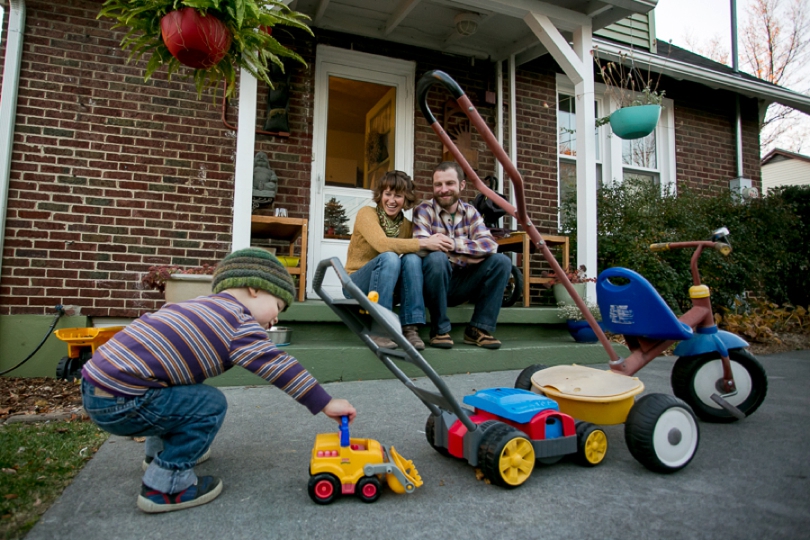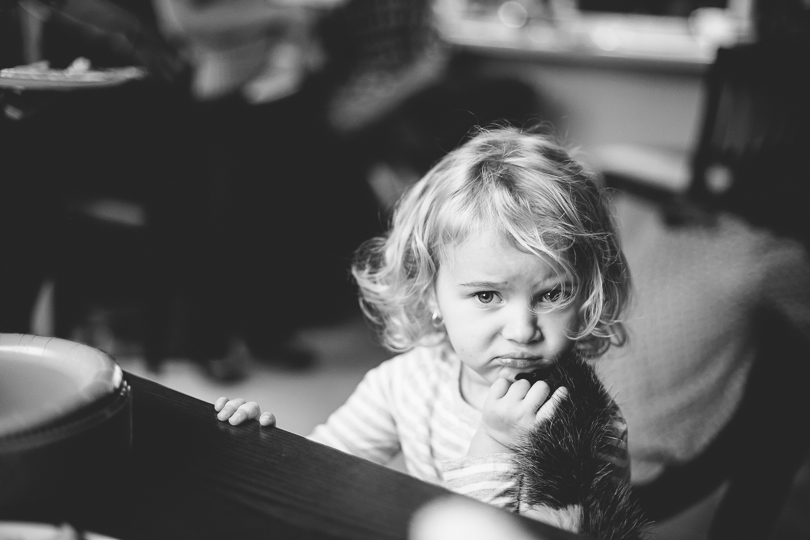Family documentary sessions focus on your family in their natural environment: your home. Instead of posing everyone outside in a park, we take photos of your family playing, cooking, working, talking… doing whatever it is you normally do. (This is different from “lifestyle” photography, which includes photos that may be posed.)
What I love most about documentary sessions is that the photos grow in meaning over time. There may be photos that you initially dismiss as unimportant, but as your children grow, you find yourself coming back to them, to the way they capture something special unfolding in their personalities. My husband once took a photo of my son, barely walking, chewing on my toes while I brushed my teeth one morning. I clicked past it, because my hair wasn’t done and the lighting wasn’t good and the next photo was way prettier. But now, three years later, that is the photo I remember when I think of that day in our lives. Me, a busy mom, just trying to care for herself for a few minutes… and James, not having it.
Although documentary sessions are becoming more popular, people still have a lot of questions about them. Particularly, how can you make sure yours feels honest while you’re undoubtedly going to be aware of the camera? With that in mind, I’ve put together a few tips for preparing for your family documentary session.
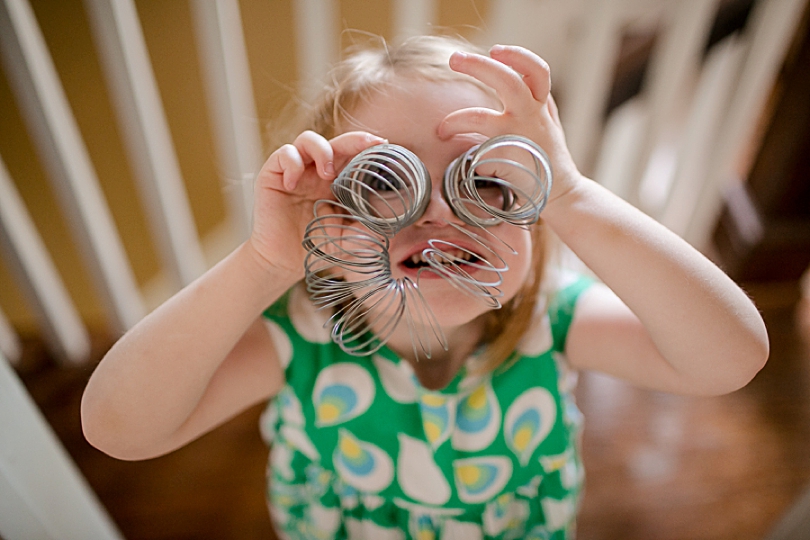
1. Take it easy.
A “short” documentary session still takes 2-3 hours, and you may feel like you need to be “on” the whole time. You don’t. I promise. When you are tired of having the camera near you or just want a break, let me know, or just walk away and close the door, and I’ll focus on something else in the home. The same goes for children. If they’re getting too riled up or too exhausted, a break may be a good idea. I want to capture your life as it normally is, not how it is when things are a little bonkers because a strange photographer has arrived. It’s a tricky balance, and we need to work together to reach it. I want you to feel like you can retreat to a quiet room and take some time for yourself during the shoot, if you need it.
2. Plan simple, unplugged activities… or nothing at all.
My goal as your documentary photographer is to capture whatever is normally going on at your house. It may be as simple as eating lunch or something like a craft project, a sport, or an errand (yes, I can follow you to Target). It might be piano practice or homework. It might be you on your computer while your partner picks up toys and your kids argue over the last apple juice. The idea is that it’s what you normally do.
For Emmett’s first session, we read books and played at home. One of my favorite documentary sessions was this one, featuring little Nolan helping bake muffins. It was a simple activity, but it fit naturally with what they wanted to capture about their lives. If you have something to do, you are more likely to act more naturally in front of the camera, and so are your kids.
Some parents (I’m one of them) like to plan each day’s activities in advance. Others like to play it by ear. During your session, either approach is 100% okay. When in doubt, let your kids choose at least one activity.
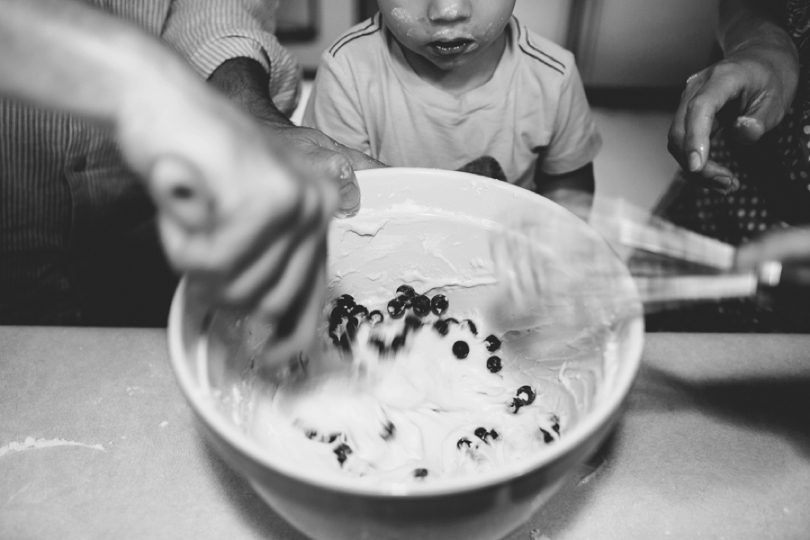

3. Dress normally.
Wear whatever you would normally be wearing, even if it doesn’t match anyone else. Do your usual makeup and hair. If the idea is to capture a normal day in the life, you need to look like you normally do. Otherwise, the photos may feel a bit inauthentic to you later on.
For kids, I think it’s best to let them choose their own outfits. My daughter goes through several costumes in a day, and the photos I have of her completely layered up are some of my favorites.


4. Talk with your children about the interview.
The interview portion of the shoot is one of the best parts. We take a break from shooting, I get out my computer and microphone, and I ask you and your kids questions about their everyday lives. When paired with the images, their answers can be quite funny or strikingly sentimental.
Your children will need to be prepared to say a few things very clearly, such as their name and age. I usually ask about their favorite activities, foods, and interests, including anything you’ve done together that day. I will also probably ask them a few questions about each other. If you know your child isn’t comfortable speaking on-the-spot like this, you might want to discuss the interview with them beforehand.
For some examples of how the interview is pieced together with your photos and video, check out this session with little Theo or this one of my own kids, which still makes me smile every time I watch it.
5. No, you do NOT have to clean!
One of the best parts of this type of session is that you do not, in fact, have to clean your house. (You’re welcome.)
It is helpful, however, if you make sure walkways are clear (so no one trips), designate a quiet place to do the interviews, and open curtains or blinds. Window light is a photographer’s best friend, but I’m very hesitant to alter the lighting you’ve chosen for your home during this type of session, and will only do so if I feel it’s absolutely necessary for technical reasons.

6. Cherish EVERY moment, at least for that day.
This is a parenting cliche we’ve all heard and probably rolled our eyes at a number of times. It’s difficult to cherish the pitter patter of little feet when they’re exiting the bed for the 5th time in an hour. And it’s hard to treasure a toddler’s beautiful voice when it’s screaming at you because you got out the wrong color fork.
But the reason it’s a cliche we hear so often is because it probably really is true. In 20 year’s time, we might actually miss those moments. When I shoot your documentary session photos, I try hard to capture the bad as well as the good. If it’s a part of your life, it might end up as part of your photos. Don’t be shocked if you see me photographing your toddler in full-on tantrum meltdown mode, or if a I snap a few photos of your kids feeling sad or disgruntled in some way. These shots add character and authenticity to the collection.
That said… As a parent, I know there is a line where photography needs to stop so that children don’t feel emotionally exploited and parents don’t feel stressed. If you feel at any point that your children need a break, tell me, or simply whisk them away and close the door. Some parents prefer to even split longer documentary sessions up so that there is a break for napping and decompressing partway through.
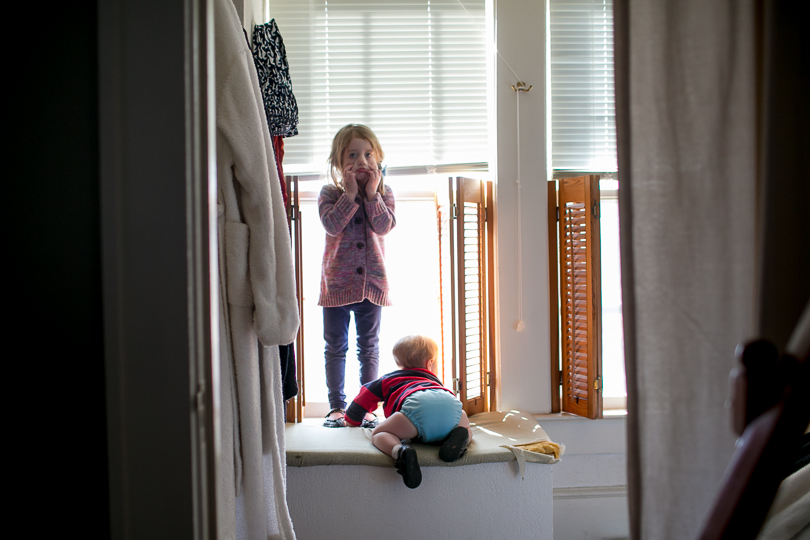
7. Be patient.
Documentary sessions, particularly if video is included, can take 4-6 weeks to get edited and delivered.
8. Consider the finished product.
Before you book this type of session, I’d urge to think about what you want to do with the photos. Are they for sharing online with family? Printing in a book or album? A set of framed prints? Are you interested in a documentary video slideshow like these? They are my very, very favorite product, because there is something especially poignant about hearing your children’s little voices alongside their photos.
I bring this up because with documentary sessions, you will probably not get the traditional everyone-smiling-at-the-camera portrait your relatives expect on a Christmas card. You will have a set of images that works together as a fluid collection, but it may be difficult to pick out one to hang on the wall as representative of your whole family. For this reason, if you’re up for it, I like to add a quick 5-10 minute mini-mini session to close out your documentary session, probably just in front of your home. It allows to get some more classic photos of you all smiling and facing the camera before we close up. And you can even change into matching clothes.
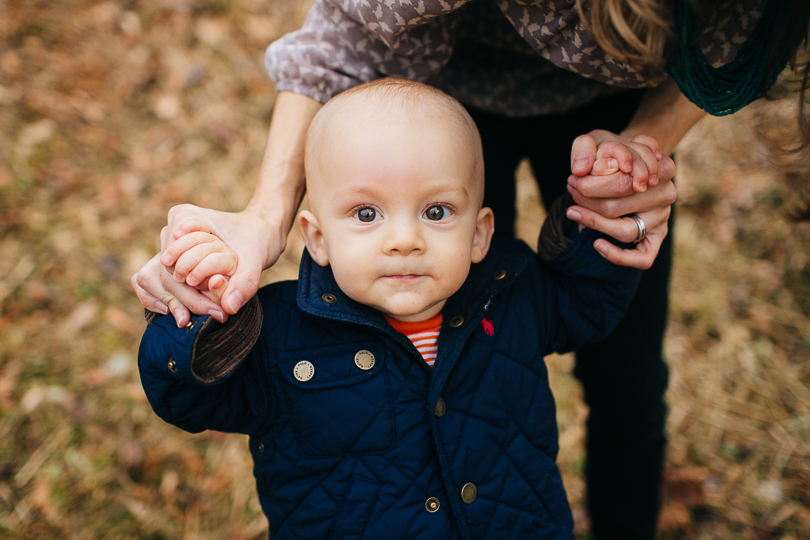
If you’re interested in find out more about documentary sessions, email me at natalie@nataliegibbs.com.
Dec 1, 2015
Preparing for Your Family Documentary Session

